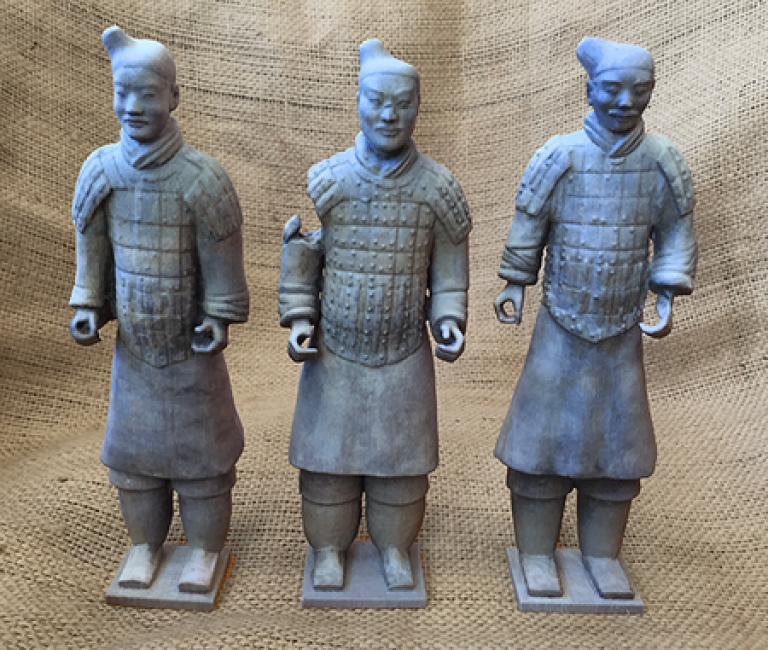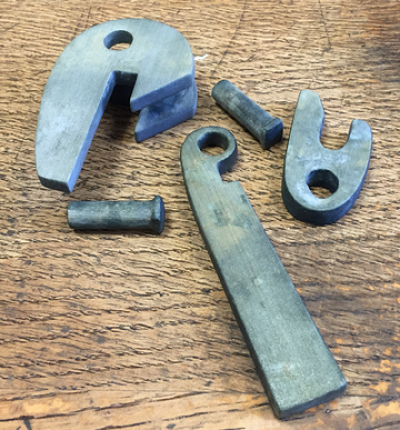3d models and 3d prints
22 February 2016
Xiuzhen, Marcos and I, together with colleagues at the Terracotta Army museum, have been busy working on a range of fun topics over the last few months.
 Some of this work relates to the geochemistry of the terracotta warriors and their weapons, other bits relate to warrior postures and formation in the pits, and we've just finished a paper on the spatial pattens of weapons and warriors that were marked with Chinese characters or numbers by the Qin artisans who made them. At first glance, these things don't all immediately fit nicely together as research questions, but actually we think they do offer some really useful mutual insights. Hopefully, more news in the spring and summer!
Some of this work relates to the geochemistry of the terracotta warriors and their weapons, other bits relate to warrior postures and formation in the pits, and we've just finished a paper on the spatial pattens of weapons and warriors that were marked with Chinese characters or numbers by the Qin artisans who made them. At first glance, these things don't all immediately fit nicely together as research questions, but actually we think they do offer some really useful mutual insights. Hopefully, more news in the spring and summer!
Three 1:10 scale warriors gypsum warriors from a cast of thousands…. (models collectively by Andrew Bevan, Xiuzhen Li, Muyang Shi, Lauren Bell, Kun Zhao and Zhen Zhao; printing by ThinkSee3D)
In any case, today's blog is inspired by a box of three nifty gypsum figurines that just arrived in the post. Some time ago, we 3d-printed a few warrior ears in plastic as a kind of prop for talking about how ears and other body parts might vary from warrior to warrior. Since then however, we've tried some more sophisticated and complicated printing of both a full-size, multi-part trigger (see below) and three different 1:10 scale warriors.
These prints make use of our low cost/high detail 3d photogrammetric models and are made in coloured gypsum. In a sense, making them is a bit of a fun sideline for everyone concerned, but in fact not only do the results look great, they turn out to be really useful for thinking through broader research questions. Actually walking around the pit itself in China obviously helps to think about things in a similar way, as does looking at the 3d models on-screen, but there is just something amazingly easy and inspiring about discussing things whilst handling a group of physical, scaled models.

The five inter-locking parts of a Qin crossbow trigger printed at 1:1.
Lots of questions rise to the surface: for example, to what degree are the differences in the physical stature of the warriors (how fat or thin they are) important and is it evidence for workshop practice of real physical variation in the army? Or, following up on some of the pioneering work done by Yuan Zhongyi and other Chinese researchers, how best would one build a typology of the different hand gestures the warriors exhibit (which relates to what weapons they carried etc.) or their different dress styles? Making prints also brings serendipitous benefits and insights. Whilst printing the crossbow trigger for us, Steven Dey used our model to mock up a nice animation of how a Qin crossbow trigger works: a small pre-industrial miracle of standardised interlocking parts!
A short animation of our 3D model and how the crossbow trigger mechanism works (with thanks to Steven Dey at ThinkSee3D)

Andrew Bevan is a Professor at the UCL Institute of Archaeology and is the Deputy Director of the Imperial Logistics Project.
 Close
Close

